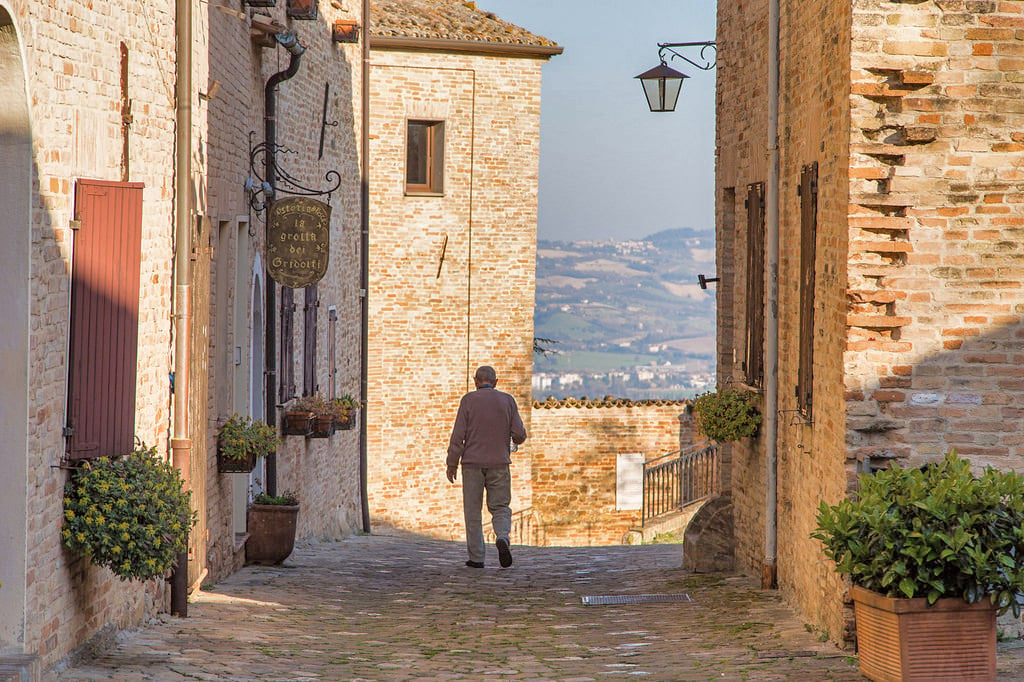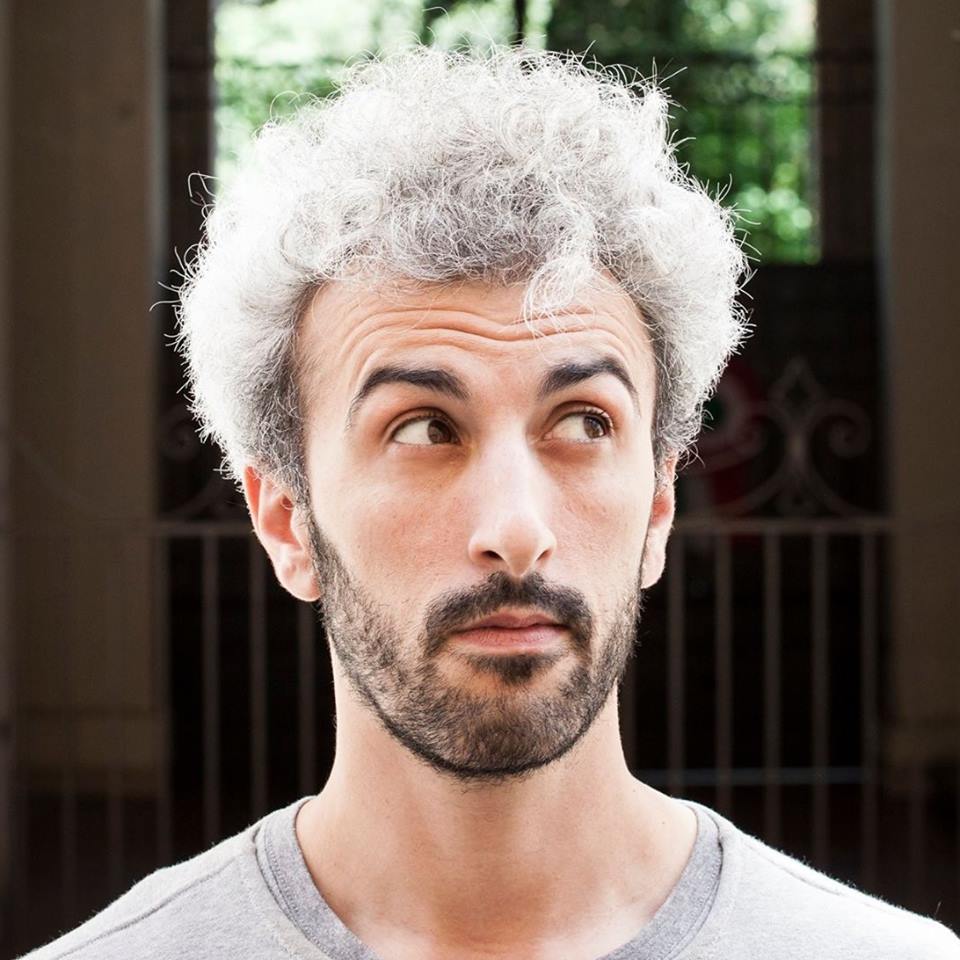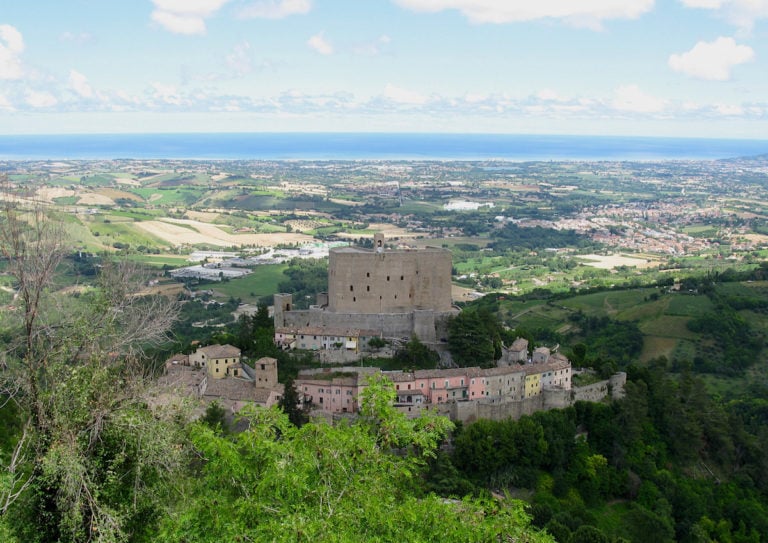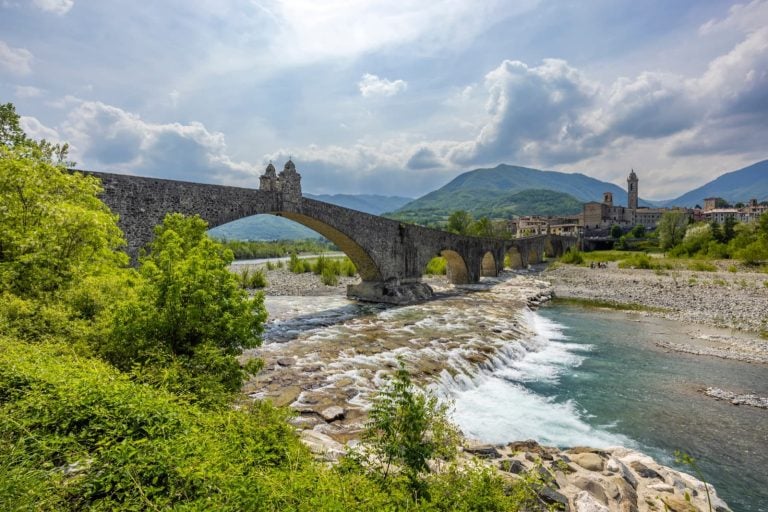Here in the Rimini hinterland is a place where time has stood still, where the breeze wafts gently off the Adriatic to caress one of Italy’s most beautiful old villages: Montegridolfo.
Olive trees, vines, and laurel oaks adorn the surrounding Conca and Foglia valleys, the last strips of land before Romagna gives way to the Marche region.
The village stands in the Apennines, far from the noise and chaos of the cities. The 30 people residing within the medieval walls (and 1000 whose houses are outside) keep the old traditions alive and preserve the area’s historical memory.
History
The first recorded mention of Montegridolfo dates back to 1148, but it was already inhabited during the Roman period and the early Middle Ages.
Settlements in the hills began to develop from the 10th century, life in the valleys being rather dangerous. Montegridolfo was on the border between the lands of the Malatesta (of Rimini) and the Montefeltro (of Urbino), and clashes were frequent. In 1233 Montegridolfo pledged loyalty to the Malatesta, provoking the hostility of the Montefeltro, which culminated in the attack that flattened the village in 1336.
The settlement was rebuilt with tall, strong new walls within a year. The burg yo-yoed between Montefeltro and Malatesta control until it was acquired by Cesare Borgia in 1502, before returning to the Malatesta again, being taken by the Venetians in 1504 and finally being absorbed into the Papal States in 1509.
Montegridolfo then experienced centuries of hard-earned peace and tranquillity until World War II broke out. From October 1943 to August 1944, the area was laid waste by bitter fighting along the Gothic Line between German and Allied troops.
The village was severely damaged and remained so until the late ’80s, when several state bodies and private investors came to the rescue, including the stylist Alberta Ferretti.
What to see

The village has the typical Malatesta shape, with a polygonal plan and four towers. But what makes this one so special isn’t what there is to see – not that much, given its diminutive size – but what there is to feel. The narrow cobbled streets, the inns, and restaurants, the parish church … it’s like being inside a snow globe.
From the small central square, three alleys lead to Palazzo Viviani, the only noble mansion in the village, now the finest (and only) hotel in town. Other buildings of note include the Malatesta fortress (14th century, now the council office), San Rocco’s church (15th century, with two original frescoes and a painting by Cagnacci of the Virgin and Child with saints), the Sanctuary of the Holy Virgin of the Graces in Trebbio, and finally the Museum of the Gothic Line with artefacts and documents from World War II.
What to do
SPRING
– A bike ride through Malatesta and Montefeltro country wouldn’t be complete without an interlude in Montegridolfo.
– This is an ideal spot for enjoying a relaxing holiday in the country far from the frenzy of everyday life.
SUMMER:
– Take a romantic stroll among the village lanes before dinner in a traditional inn.
– The Conca valley (like the whole of Romagna) is perfect for sporty types looking for a beautiful piece of country to pump the pedals in. There are plenty of great rides to explore the old domain of the Malatesta.
AUTUMN:
– Love wine? (Who doesn’t?) Then follow your nose to Montegridolfo, via the local wine tour, the Strada Dei Vini e Dei Sapori Dei Colli di Rimini.
– Have you ever wondered what it feels like to explore the landscape of a painting? Piero Della Francesca used many scenes from this area in his works.
WINTER:
– Come and help us celebrate the local olive oil festival on the second Sunday in December.
– If you love the poetic masterpiece that is the Divine Comedy, nip over to Gradara, the backdrop for Paolo and Francesca’s story; it’s not even 10 miles away.
Events
Every Good Friday for about the last twenty years, a hundred people in historical costume have paraded from San Rocco church to the main square through the streets of the old centre.
In summer, the tiny lanes turn into open-air galleries, as the village becomes the stage for a spectrum of art and music events. Like Un Castello di Voci, an opera and classical-music festival graced by internationally renowned artists, with performances of works from all eras.

In late August every year, the Montegridolfo Liberata festival re-enacts the WW2 battle to liberate the village, with guided tours at the Museum of the Gothic Line, theatre performances, lectures, and entertainment.
On the second Sunday in December, the Olio Novello in Tavola festival attracts connoisseurs of fine olive oil, one of the area’s main products.
Food and Wine
Tagliatelle with meat sauce and mushrooms (known here as marchignoli), strozzapreti pasta in a cream and meat sauce (pasticciati), polenta with meat sauce, baked lamb, chicken, pigeon, charcuterie and cheese are all local favourites.
The black truffles and the superb extra virgin olive oil from groves all over the area lend the cuisine a perfect final touch, while the Trebbiano and Sangiovese wines offer a sublime accompaniment.
How to get to Montegridolfo
Montegridolfo is about 12 miles from the Adriatic coast on the rolling hills between Cattolica and Pesaro, near the border with the Marche region. There is no rail link, but the village is easy to reach by car or bus.
The [Emilia Romagna Villages] section is dedicated to Villages that are part of the Associations Borghi più Belli d’Italia, Bandiere Arancioni del Touring Club & Borghi Autentici d’Italia.
Author

Davide Marino
Davide Marino was born archaeologist but ended up doing other things. Rational – but not methodic, slow – but passionate. A young enthusiast with grey hair
You may also like
8 unmissable Castles in the lands of Guidi and Malatesta
by Walter Manni /// April 13, 2018
The “Orange Flag” Villages in Emilia-Romagna
by Elisa Mazzini /// December 10, 2024

Interested in our newsletter?
Every first of the month, an email (in Italian) with selected contents and upcoming events.
Montefiore Conca, a medieval castle with a view
by Davide Marino /// July 27, 2017
Breathtaking landscapes in Romagna… and where to find them
by Davide Marino /// August 6, 2018




